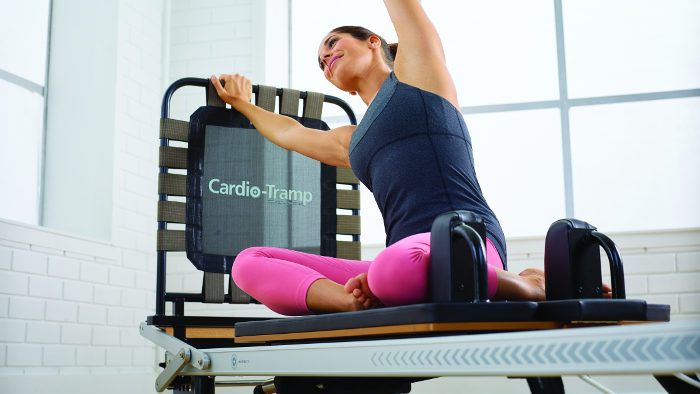
We don't have to tell you how incredibly important taking proper care of your back is. When your back is in pain, it can affect the mobility of your entire body. Back care is an essential part of overall body conditioning.
While traditional crunches strengthen the outer layers of the abdominal musculature, they bypass the deep support structures of your back. This can place the lumbar spine in too much flexion and may even contribute to future back pain. By training the deep stabilizers of the lumbar spine, you are providing the preventative protection your back needs.
The major focus of STOTT PILATES is to strengthen the deep stabilizers of the spine. STOTT PILATES also develops awareness, which is necessary to recruit and strengthen the deep stabilizing muscles, and promotes effective breathing patterns, which alleviate stress on the back. STOTT PILATES builds core strength by engaging the deep pelvic floor, which in turn works the transversus abdominus and affects the positioning of other structures in the lumbopelvic region, providing support for the lower back.
Below are some Reformer-based STOTT PILATES exercises that can help take care of the back, and are especially beneficial for those with limited flexion. In these exercises, pressure is taken off of lower spine, allowing for abdominal and upper body strengthening without placing stress on the lower back.
Make sure you have the go-ahead from your health care professional before trying these out if you are already suffering from back pain.
Reformer STOTT PILATES Exercise for Back Care
Starting Position
Sit in a kneeling position on the Reformer carriage, facing the footbar. Knees are hip distance apart. Place a Mini Stability Ball™ on the carriage between the lower legs, and under the pelvis. Sit on the Mini Stability Ball. There should be no weight on the knees or legs. The weight should be on the Ball. Neutral pelvis and spine. Take one strap in each hand, arms long by your sides and palms facing forward.
Exercise
- Inhale to prepare
- Exhale, keeping the arms long, move them forward and up to shoulder height. The carriage will move back accordingly
- Inhale, return to starting position
Modification
- Bicep curls
- Chest pressers